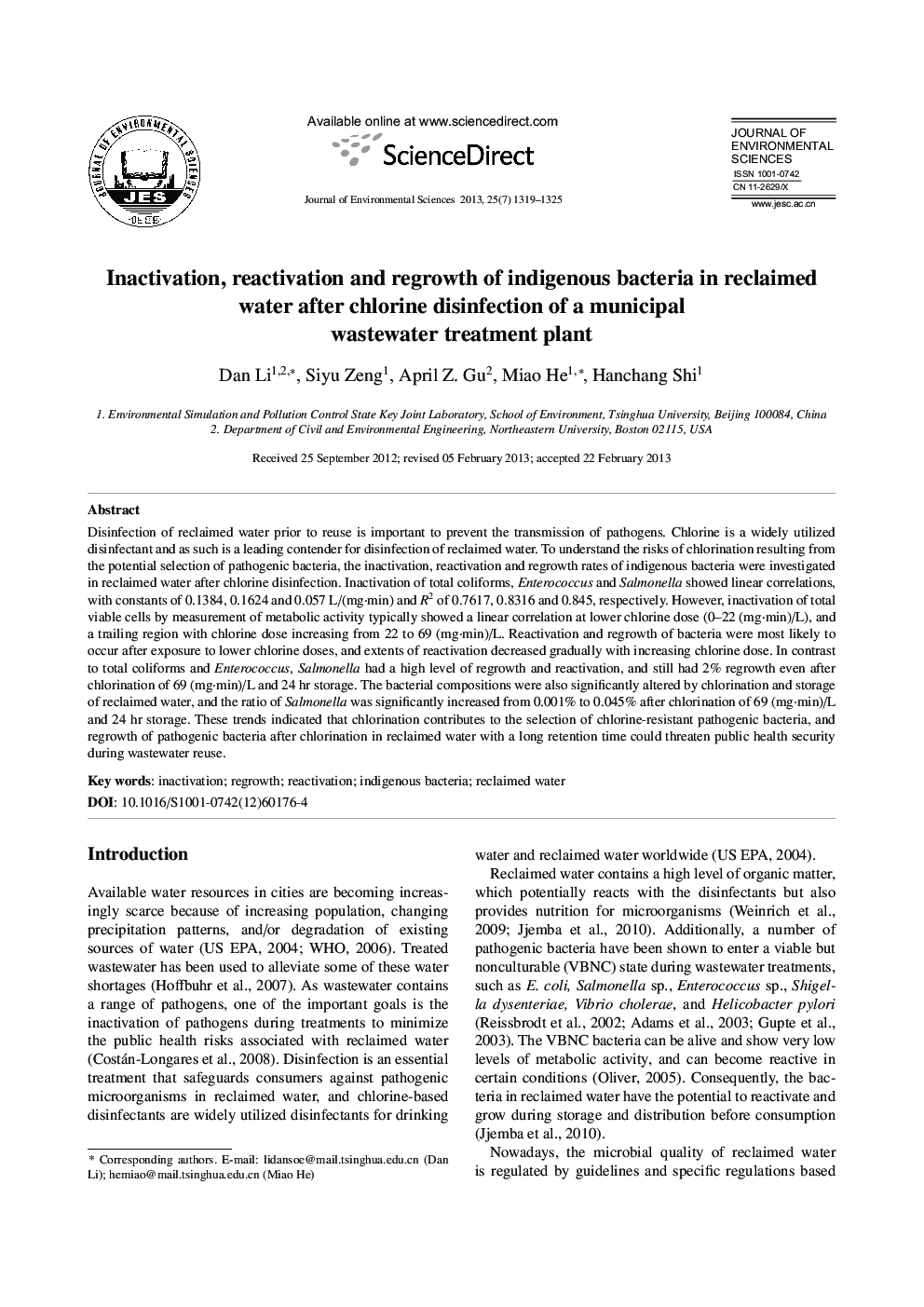| کد مقاله | کد نشریه | سال انتشار | مقاله انگلیسی | نسخه تمام متن |
|---|---|---|---|---|
| 4454841 | 1312496 | 2013 | 7 صفحه PDF | دانلود رایگان |

Disinfection of reclaimed water prior to reuse is important to prevent the transmission of pathogens. Chlorine is a widely utilized disinfectant and as such is a leading contender for disinfection of reclaimed water. To understand the risks of chlorination resulting from the potential selection of pathogenic bacteria, the inactivation, reactivation and regrowth rates of indigenous bacteria were investigated in reclaimed water after chlorine disinfection. Inactivation of total coliforms, Enterococcus and Salmonella showed linear correlations, with constants of 0.1384, 0.1624 and 0.057 L/(mg·min) and R2 of 0.7617, 0.8316 and 0.845, respectively. However, inactivation of total viable cells by measurement of metabolic activity typically showed a linear correlation at lower chlorine dose (0–22 (mg·min)/L), and a trailing region with chlorine dose increasing from 22 to 69 (mg·min)/L. Reactivation and regrowth of bacteria were most likely to occur after exposure to lower chlorine doses, and extents of reactivation decreased gradually with increasing chlorine dose. In contrast to total coliforms and Enterococcus, Salmonella had a high level of regrowth and reactivation, and still had 2% regrowth even after chlorination of 69 (mg·min)/L and 24 hr storage. The bacterial compositions were also significantly altered by chlorination and storage of reclaimed water, and the ratio of Salmonella was significantly increased from 0.001% to 0.045% after chlorination of 69 (mg·min)/L and 24 hr storage. These trends indicated that chlorination contributes to the selection of chlorine-resistant pathogenic bacteria, and regrowth of pathogenic bacteria after chlorination in reclaimed water with a long retention time could threaten public health security during wastewater reuse.
Journal: Journal of Environmental Sciences - Volume 25, Issue 7, 1 July 2013, Pages 1319-1325